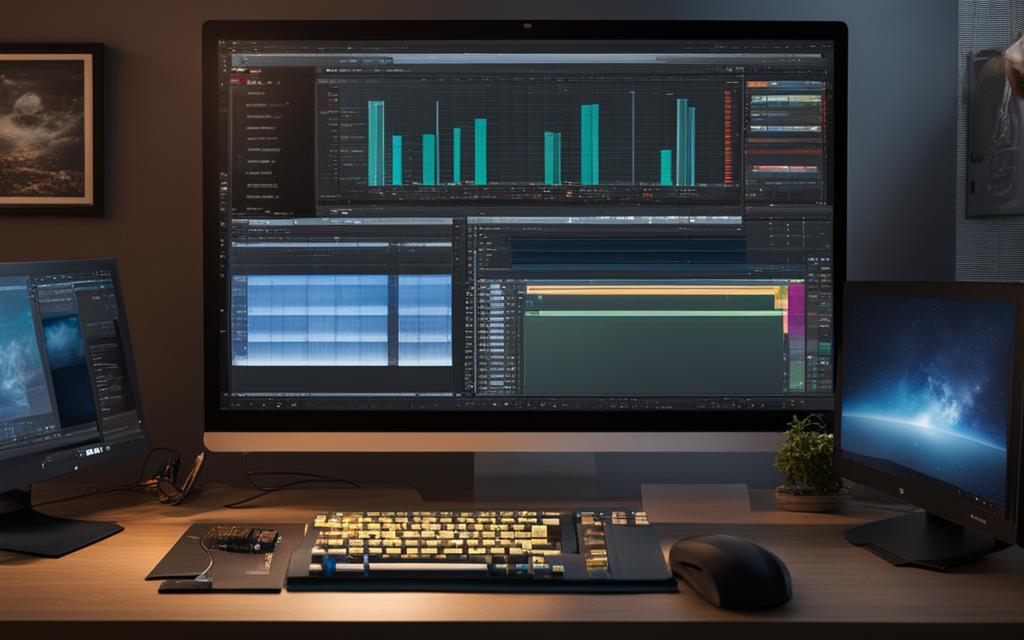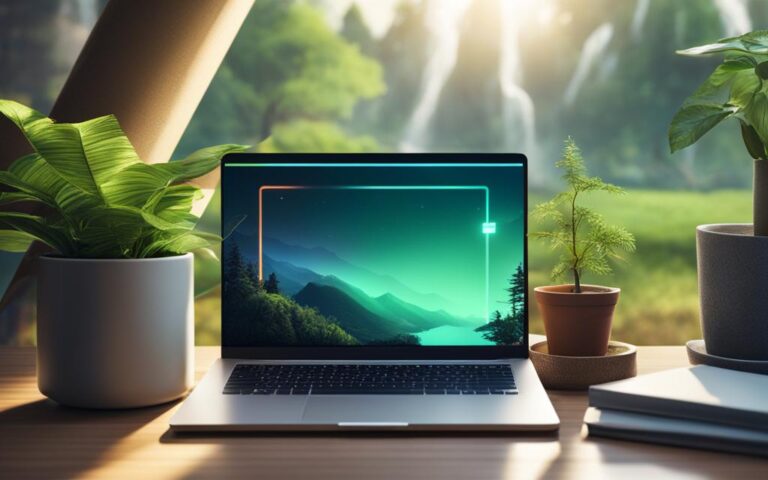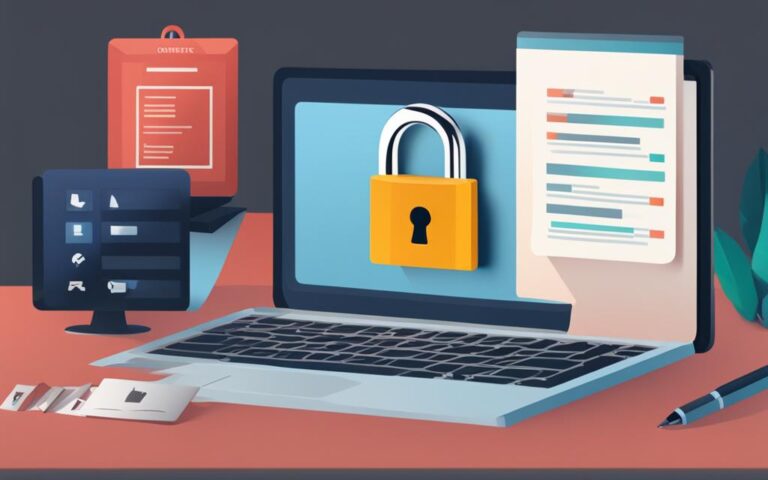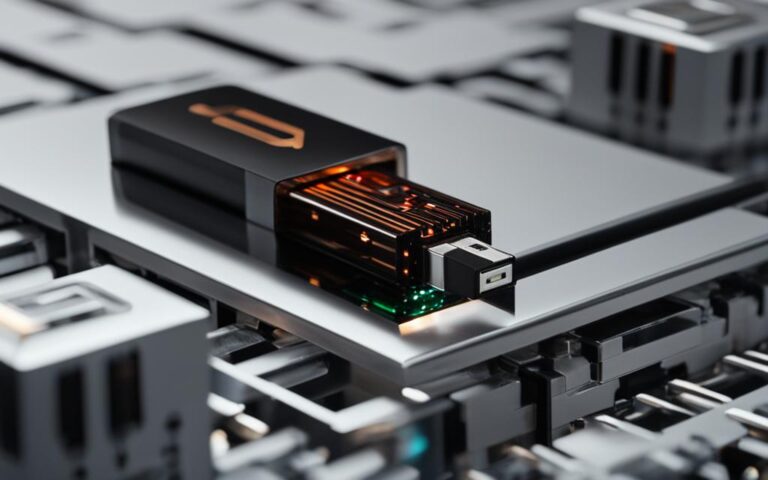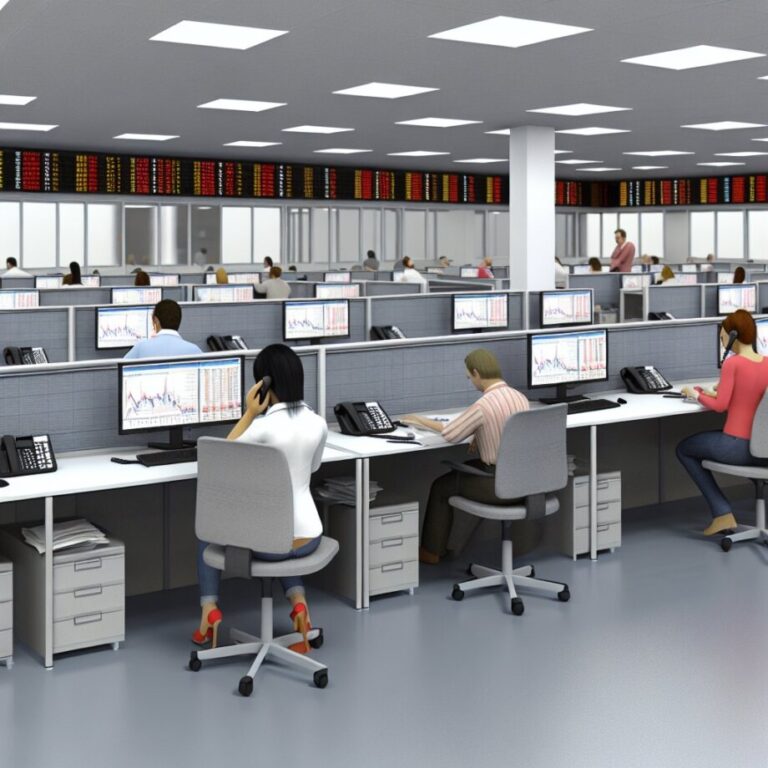If you’re a video editor, you know how important it is to have a computer that can handle the demands of your work. Slow rendering times, choppy playback, and frequent crashes can quickly derail your workflow and leave you feeling frustrated.
The good news is that there are many ways to optimize your computer for video editing tasks. By implementing some simple strategies, you can significantly improve your computer’s performance and enhance your editing workflow.
First and foremost, optimizing your computer for video editing requires an understanding of its hardware and software specifications. From there, you can assess whether your computer meets the requirements for video editing or needs upgrades to improve its performance.
In the following sections, we’ll provide you with comprehensive computer optimization tips for video editing, including hardware upgrades, software optimization, storage management, and more. By following these recommendations, you’ll be able to improve your computer’s performance and achieve smooth and efficient video editing experiences.
Assess Your Current Computer Specifications
Before you start optimizing your computer for video editing, it’s important to make sure your current setup meets the necessary specifications. The hardware and software requirements for video editing can be demanding, so it’s essential to have a computer that can handle the workload.
Here are some of the key computer specifications for video editing:
| Component | Minimum Requirements | Recommended Requirements |
|---|---|---|
| Processor (CPU) | Intel Core i5 or equivalent | Intel Core i7 or equivalent |
| Graphics Card (GPU) | NVIDIA GeForce GTX 1050 or equivalent | NVIDIA GeForce GTX 1660 or equivalent |
| Memory (RAM) | 8 GB | 16 GB or more |
| Storage | 250 GB SSD or higher | 500 GB SSD or higher |
| Operating System (OS) | Windows 10 | Windows 10 Pro or macOS 10.15 or higher |
Keep in mind that these are just the minimum and recommended requirements, and your specific needs may vary depending on the type and complexity of video editing you plan to do.
If your current computer falls short of these specifications, you may need to optimize your PC for video editing by upgrading certain components. Don’t worry, in Section 3, we will provide more details on how to upgrade your computer hardware to improve your editing performance.
But before you do that, let’s move on to the next section to learn more about the optimal computer setup for video editing.
Upgrade Your Computer Hardware
If your computer is struggling to keep up with the demands of video editing, it may be time to upgrade your hardware. Upgrading your computer’s hardware can significantly enhance its performance and help you achieve smoother video editing experiences. Here are some hardware components to consider upgrading:
| Hardware Component | Upgrade Recommendation |
|---|---|
| CPU | Upgrade to a multi-core processor to improve video rendering speed and enhance overall performance. |
| Graphics Card | Consider upgrading your graphics card to a dedicated GPU, which can greatly improve video playback and rendering speed. |
| RAM | Upgrade to at least 16GB of RAM to ensure that your computer can handle large video files and multiple applications running simultaneously. |
| Storage | Consider upgrading to a solid-state drive (SSD), which can significantly improve read and write speeds, allowing for faster video rendering and file transfers. |
It is important to note that upgrading hardware components may require technical expertise. If you are not comfortable upgrading your computer’s hardware, consider seeking assistance from a professional.
Aside from upgrading hardware components, there are additional hardware tips you can follow to optimize your computer’s performance for video editing:
- Clean your computer’s internal components, such as the fans and cooling system, to prevent overheating and ensure optimal performance.
- Invest in a good quality monitor with a high resolution and color accuracy to better visualize and fine-tune your video edits.
- Use a reliable and high-speed internet connection when working with cloud-based storage and collaboration tools.
By upgrading your computer’s hardware and following these hardware tips, you can optimize your computer’s performance for video editing tasks. The investment can be significant, but the results will speak for themselves, allowing you to achieve stunning visuals with ease.
Clean Up Your Hard Drive and Optimize Storage
When it comes to video editing, having a clean and organized hard drive is crucial for optimal performance. Here are some computer optimization tips for video editing to help you clean up your hard drive and optimize storage:
Delete Unnecessary Files
Take the time to go through your files and delete anything that you no longer need. This includes old projects, unused footage, and unnecessary downloads. By freeing up space on your hard drive, you can improve your computer’s performance and enhance your editing experience.
Organize Your Files
Once you have deleted any unnecessary files, it’s time to organize the remaining ones. Create a folder structure that makes sense for your video editing projects and stick to it. This will not only help keep your files organized, but it will also make it easier to find what you need when you need it.
Utilize External Hard Drives
If you find that your computer’s hard drive is still running low on space, consider investing in an external hard drive. This will provide you with additional storage space without sacrificing performance. It’s also a great way to keep your video editing projects separate from your other files.
Use Cloud Storage
If you prefer not to use an external hard drive, cloud storage is another option to consider. Many services offer free or low-cost options for storing your files online. This provides you with an added level of security, as your files are backed up in case something happens to your computer.
Optimize Your Storage Settings
Finally, make sure your computer’s storage settings are optimized for video editing. If you are using a Windows computer, you can use the built-in Disk Cleanup utility to remove temporary files and free up space on your hard drive. Mac users can use the Storage Management tool to optimize their storage settings.
Optimize Your Operating System
To improve your computer’s video editing performance, you need to optimize your operating system. Here, we will discuss some important computer optimization tips that can help enhance your operating system for better video editing experiences.
Clean Up Your System
Cleaning up your computer system is the first step to optimize your operating system. Remove any junk files, temporary files and other unnecessary data from your hard drive. This will free up more space on your hard drive, and your computer will run faster, which will result in a better video editing experience.
Update Your System
Keeping your operating system updated is essential for good performance. Regular updates fix bugs and security issues, improving your computer’s overall performance. Make sure that your operating system is set to update automatically, so you don’t have to worry about manually updating it.
Remove Unnecessary Software
To optimize your operating system, you should also remove any unnecessary software from your computer. Any software that you are not using regularly should be uninstalled. This will free up more system resources for your video editing software, resulting in a smoother editing experience.
Adjust System Settings for Optimal Performance
Adjusting your computer’s system settings is another crucial step in optimizing your operating system. You can change your computer’s settings to prioritize video editing software, adjust power settings, and disable unnecessary background processes. These changes will result in a smoother and more efficient video editing experience.
Manage Background Processes and Unnecessary Software
Background processes and unnecessary software can slow down your computer and negatively impact your video editing workflow. It’s important to take control of these processes and remove any unnecessary software to optimize your computer for video editing tasks.
To manage background processes, you can use the Task Manager on Windows or Activity Monitor on Mac. These tools allow you to view which processes are running and how much CPU and memory they are using. You can then decide which processes you want to end or temporarily suspend to free up system resources.
Similarly, you can remove any unnecessary software that may be taking up valuable storage space and contributing to background processes. To do so, you can use the Control Panel on Windows or the Applications folder on Mac to uninstall or delete software that you no longer need.
By managing background processes and removing unnecessary software, you can free up system resources and optimize your computer for video editing tasks. This can lead to smoother performance and a more efficient editing workflow.
Adjust Power Settings for Maximum Performance
Properly adjusting your computer’s power settings is crucial to ensure that it operates at maximum performance during video editing tasks. By default, your computer’s power settings may prioritize energy conservation over performance, reducing its speed and responsiveness.
To optimize your computer for video editing, follow these steps:
- Access Power Options: Click on the Windows Start button and select “Control Panel” from the menu. From there, click on “Power Options.”
- Choose High Performance Plan: Select the “High Performance” power plan. This plan maximizes your computer’s performance by disabling power-saving features and prioritizing high-speed processing.
- Adjust Advanced Settings: Click on “Change plan settings” next to the High Performance plan. Then, click on “Change advanced power settings” to access a detailed list of advanced settings.
- Configure Processor Power: From the advanced settings menu, expand the “Processor power management” section. Here, you can configure the maximum and minimum processor states to 100%. This action ensures that your computer’s processor operates at maximum performance during video editing tasks, reducing lag and choppy playback.
- Set System Cooling Policy: Expand the “System cooling policy” section and set it to “Active” to ensure that your computer’s cooling system operates at maximum efficiency. This action can prevent your computer from overheating, reducing the risk of damage to key components.
- Save Changes: After adjusting the power settings, click on “Apply” and “OK” buttons to save the changes.
By adjusting your computer’s power settings, you can ensure that it operates at peak performance during video editing tasks, improving your editing workflow and enhancing your creative capabilities.
Utilize External Storage and Backup Solutions
Video editing projects can take up a significant amount of storage space, which can slow down your computer’s performance. To avoid this issue, you can utilize external storage solutions and implement backup strategies. By following these tips, you can improve your computer’s efficiency and ensure that your data is safe and secure.
External Storage Solutions
Investing in external storage solutions can be beneficial for several reasons. External hard drives, solid-state drives (SSDs), and network-attached storage (NAS) devices can all provide additional storage space, allowing you to work on video editing projects without worrying about running out of space. They also help to reduce the load on your computer’s internal hard drive, which can improve its overall performance.
When selecting an external storage device, consider the following:
- Storage capacity: Choose a device with sufficient space to store your video assets and projects.
- Interface: Make sure the device is compatible with your computer’s interface, such as USB, Thunderbolt, or Firewire.
- Speed: Select a device with fast read and write speeds to avoid lagging and delays when working on large files.
- Portability: If you need to work on video editing projects on the go, consider a portable device that is lightweight and easy to transport, like a portable SSD.
Some popular external storage solutions for video editing tasks include the following:
| Device | Storage Capacity | Interface | Speed | Price |
|---|---|---|---|---|
| Seagate Backup Plus Portable | 1TB – 5TB | USB 3.0 | Up to 120MB/s | $64.99 – $144.99 |
| Samsung T5 Portable SSD | 250GB – 2TB | USB 3.1 | Up to 540MB/s | $89.99 – $279.99 |
| Western Digital My Cloud EX2 Ultra | 4TB – 16TB | Ethernet, USB | Up to 116MB/s | $249.99 – $749.99 |
Keep in mind that these are just a few examples, and there are many other external storage devices available on the market. Before making a purchase, be sure to read reviews and compare prices to find the best fit for your needs and budget.
Backup Strategies
Backing up your video editing projects and other important data is a must. Hardware failures, accidental deletions, and cyber-attacks can all result in the loss of valuable data. By implementing a backup strategy, you can protect yourself from these threats and ensure that your data is always available when you need it.
There are several options for backing up your data:
- External hard drives: You can manually back up your data to external hard drives on a regular basis. This option can be time-consuming, but it is relatively inexpensive.
- Cloud storage: Services like Google Drive, Dropbox, and iCloud offer cloud-based backup solutions. These options are convenient and accessible from anywhere with an internet connection, but they can be expensive if you have large amounts of data.
- Network-attached storage: NAS devices can be used for both external storage and backup purposes, allowing you to keep your data in one central location and access it easily from multiple devices.
Whichever backup strategy you choose, be sure to schedule regular backups and store your data in multiple locations to minimize the risk of data loss.
By utilizing external storage and backup solutions, you can optimize your computer for video editing tasks and ensure that your data is safe and secure. With these tips in mind, you can focus on creating stunning visuals and enhancing your editing workflow without worrying about storage limitations or data loss.
Update Drivers and Software
When it comes to optimizing your computer for video editing, keeping your drivers and software up to date is crucial. Outdated drivers and software can cause compatibility issues, errors, and even crashes, hindering your computer’s performance during editing.
To ensure your computer is running at its best, regularly check for updates for your drivers and editing software. Most editing software providers offer regular updates to their software to improve performance, fix bugs, and add new features. Make sure to install these updates promptly to take advantage of the latest optimizations.
Similarly, regularly update your device drivers, including graphics card, sound card, network card, and chipset drivers. Updating these drivers can enhance system stability, fix bugs, and boost system performance, improving your video editing experience.
Updating Drivers
Updating drivers can be a straightforward process. Follow these simple steps to update your drivers:
- Identify the device whose driver you need to update.
- Visit the device manufacturer’s website and navigate to the “Support” or “Downloads” section.
- Download the latest driver for your device.
- Open the downloaded file and follow the on-screen instructions to install the driver.
- Restart your computer to complete the installation process.
Updating Editing Software
Updating editing software is typically a simple process as well. Follow these steps to update your editing software:
- Open your editing software.
- Navigate to the “Help” or “Updates” section of the software.
- Check for available updates.
- If updates are available, download and install them.
- Restart your computer to complete the installation process.
By regularly updating your drivers and editing software, you can ensure your computer is performing optimally for video editing tasks.
Optimize Your Editing Software Settings
When it comes to video editing, optimizing your editing software settings is just as important as upgrading your computer hardware. By fine-tuning your editing software, you can make the most of your hardware upgrades and achieve superior results in less time. Here are some tips to optimize your editing software settings:
- Adjust your playback settings to optimize video playback for maximum performance. This will reduce lag and ensure smoother playback.
- Utilize proxies to edit large, high-resolution files more efficiently. Proxies are smaller, lower-resolution versions of your original files that are easier to edit and playback.
- Disable any unnecessary visual effects and transitions that can slow down your editing software. Only enable them when absolutely necessary.
- Use keyboard shortcuts to speed up your workflow and avoid unnecessary mouse clicks.
- Configure your rendering and export settings to match your project’s specifications. Choosing the right export settings can significantly improve your video’s quality and performance.
By following these editing software optimization tips, you can enhance your editing workflow, achieve superior results, and maximize your computer’s performance for video editing tasks.
Conclusion: Optimize Your Computer for Video Editing Tasks
Congratulations! You’ve reached the end of this article on computer optimization tips for video editing. By now, you have learned valuable techniques to enhance your computer’s performance and streamline your video editing workflow.
Take Action
It’s time to put your newfound knowledge into action. Start by assessing your current computer specifications to determine if any upgrades are necessary, and clean up your hard drive to optimize storage space. Remember to update your drivers and software and adjust your power settings to ensure maximum performance.
Consider implementing external storage and backup solutions to ensure that your video editing projects are always secure and accessible. Fine-tune your editing software settings to achieve optimal performance, and manage background processes and unnecessary software to free up valuable system resources.
Final Thoughts
Optimizing your computer for video editing tasks is essential to achieving stunning visuals with ease. By implementing the strategies outlined in this article, you can take control of your computer’s performance and elevate your video editing capabilities.
Thank you for reading this article, and we hope that you found it informative and useful. Good luck with your video editing endeavors!

